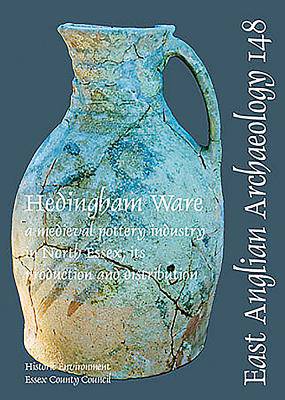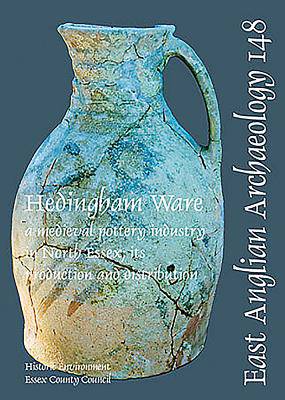
- Afhalen na 1 uur in een winkel met voorraad
- Gratis thuislevering in België vanaf € 30
- Ruim aanbod met 7 miljoen producten
- Afhalen na 1 uur in een winkel met voorraad
- Gratis thuislevering in België vanaf € 30
- Ruim aanbod met 7 miljoen producten
Zoeken
Hedingham Ware
A Medieval Pottery Industry in North Essex; Its Production and Distribution
Helen Walker
€ 69,45
+ 138 punten
Omschrijving
Between the 12th and 14th centuries, the Hedingham pottery industry produced decorated and glazed finewares, mainly jugs, and grey-firing coarsewares. This study provides a synthesis of Hedingham Ware production and explores its distribution within East Anglia. A gazetteer of the fourteen known production sites is provided, and the pottery is used to create a typology of fabric types, vessel forms and decoration for both fine and coarse wares. The industry appears to have evolved from the early medieval tradition, although it has similarities with Late Saxon Thetford-type ware. The coarsewares are most similar to those produced near Colchester and show some similarities to coarsewares produced in Suffolk. The Hedingham industry did not die out in the 14th century but became subsumed into the sandy orange ware tradition and lost its identity as Hedingham Ware.
Specificaties
Betrokkenen
- Auteur(s):
- Uitgeverij:
Inhoud
- Aantal bladzijden:
- 200
- Taal:
- Engels
- Reeks:
- Reeksnummer:
- nr. 148
Eigenschappen
- Productcode (EAN):
- 9781841940977
- Verschijningsdatum:
- 31/12/2012
- Uitvoering:
- Paperback
- Formaat:
- Trade paperback (VS)
- Afmetingen:
- 210 mm x 297 mm

Alleen bij Standaard Boekhandel
+ 138 punten op je klantenkaart van Standaard Boekhandel
Beoordelingen
We publiceren alleen reviews die voldoen aan de voorwaarden voor reviews. Bekijk onze voorwaarden voor reviews.








